What'sNEW
October - December 2013
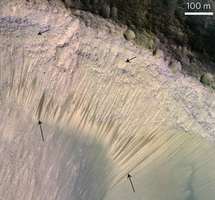 ...Intriguing clues suggest that water may still run across the surface from time to time.
...Intriguing clues suggest that water may still run across the surface from time to time.
 Alfred S. McEwen et al., "Recurring slope lineae in equatorial regions of Mars" [abstract], doi:10.1038/ngeo2014, p 53-58 v 7, Nature Geoscience, online 10 Dec 2013. Alfred S. McEwen et al., "Recurring slope lineae in equatorial regions of Mars" [abstract], doi:10.1038/ngeo2014, p 53-58 v 7, Nature Geoscience, online 10 Dec 2013.
 Water seems to flow freely on Mars (with a 16-second movie), by Maggie McKee, doi:10.1038/nature.2013.14343, Nature News, 10 Dec 2013. Water seems to flow freely on Mars (with a 16-second movie), by Maggie McKee, doi:10.1038/nature.2013.14343, Nature News, 10 Dec 2013.
 Life on Mars! is a related CA webpage. Life on Mars! is a related CA webpage.
Eugene V. Koonin's book, The Logic of Chance, is an excellent resource for today's theories about evolution and the origin of life. Thumbing back through it, we see our underlinings on almost every page. These we made for a variety of reasons, beginning with, Wow, we didn't know that!
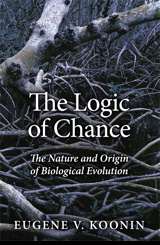
Koonin, a Senior Investigator at NIH and Editor-in-Chief of Biology Direct, sees all the current research and integrates it with existing knowledge to the extent possible. This integration, however, requires major amendments to the prevailing paradigm, and he is blunt about that. "...Our understandng of evolution—and with it the very nature of biology—have forever departed from the prevailing views of the twentieth century that today look rather naïve and somewhat dogmatic" (p x).
Koonin is impressed by "a remarkable contrast between the relative evolutionary stability of individual genes, many of which retain their indentity over hundreds of millions or even billions of years of evolution, and the maleability of composition and architecture of genomes that change orders of magnitude faster" (p 77). Here and elsewhere, he reinforces to us the view that genes could be older than life on Earth. Of course, he does not go that far. Rather, in support of the basic darwinian belief that life can originate, probably on this planet, he is quite inventive. Yet nowhere in the book do we see any credible accounting for new genes. Instead, he mentions only briefly, "...the emergence of a new gene, typically via gene duplication, followed by radical divergence...," with no further elaboration (p 331). Radical divergence erases the details, apparently. Besides, what about the "relative stability" just mentioned?
Horizontal Gene Transfer (HGT) is very well known to him. "...Even a gene that is found in all modern cellular life forms might not be inherited from LUCA: Its ubiquity could instead result from an HGT sweep" (p 331). He also classifies viruses as a huge separate "empire" of life that interacts furiously with all cellular life. "...These findings suggest that the Virus World largely 'builds' the genomes of cellular life forms and so shapes the evolution of life in general" (his italics, p 301). Wow, he knows that?
We learned more than ever about the details and varieties of, and difficulties for, the RNA World and other origin-of-life theories. Koonin admits, "The difficulty of the problem cannot be overestimated" (p 329). Yet he is hopeful. How hopeful? "We are even starting to develop scenarios for the origin of cells that may go beyond sheer speculation" (p 401)! His own speculations include a "Many Worlds" construct in which our biological world is vanishingly unlikely — the weak anthropic principle, he says (p 384). Please remind us, why is panspermia considered so outrageous? Nevermind. We were tremendously edified by The Logic of Chance. But also discouraged. Apparently, no amount of difficulty weakens darwinism's faith enough to allow consideration of alternatives like cosmic ancestry.
 Eugene V. Koonin, The Logic of Chance: The Nature and Origin of Biological Evolution, FT Press, 31 Aug 2011. Eugene V. Koonin, The Logic of Chance: The Nature and Origin of Biological Evolution, FT Press, 31 Aug 2011.
 The Koonin threshold for the Origin of Life on Earth, a review by Gert Korthof, 03 Jan 2013. The Koonin threshold for the Origin of Life on Earth, a review by Gert Korthof, 03 Jan 2013.
 Neo-Darwinism..., Neo-Darwinism...,
 The RNA World..., The RNA World...,
 Metazoan Genes Older Than Metazoa? and Metazoan Genes Older Than Metazoa? and
 Genes Older Than Earth? are related CA webpages. Genes Older Than Earth? are related CA webpages.
 10 Mar 2021: New genes can be acquired only via HGT, whereas other mechanisms, such as duplication followed by divergence and de novo gene birth, are disregarded — Koonin's new opinion of evolution among prokaryotes. 10 Mar 2021: New genes can be acquired only via HGT, whereas other mechanisms, such as duplication followed by divergence and de novo gene birth, are disregarded — Koonin's new opinion of evolution among prokaryotes.
 Viruses and Other Gene Transfer Mechanisms is a related CA webpage. Viruses and Other Gene Transfer Mechanisms is a related CA webpage.
What'sNEW about HGT  | |

 Gil Levin, Honorary Professor at The Buckingham Centre for Astrobiology, demands that NASA release evidence of Martian life Under the Freedom of Information Act [pdf | docx], Press Release from BCAB, 14 Dec 2013. Gil Levin, Honorary Professor at The Buckingham Centre for Astrobiology, demands that NASA release evidence of Martian life Under the Freedom of Information Act [pdf | docx], Press Release from BCAB, 14 Dec 2013.
 Life on Mars! is the main related CA webpage. Life on Mars! is the main related CA webpage.
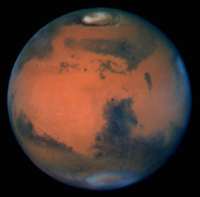 This is combustion of organic carbon, folks.
This is combustion of organic carbon, folks.
Mars has organics, according to NASA's new analysis of data from the Curiosity Rover. This development reverses the main objection (no organics detected) to the positive results from the life-detecting LR experiments on the Viking landers in 1976-77. May we please reconsider? Perhaps we have already found (dormant microbial) life on Mars.
 Richard A. Kerr, "New Results Send Mars Rover on a Quest for Ancient Life" [summary], doi:10.1126/science.342.6164.1300, p 1300-1301 v 342, Science, 13 Dec 2013. Richard A. Kerr, "New Results Send Mars Rover on a Quest for Ancient Life" [summary], doi:10.1126/science.342.6164.1300, p 1300-1301 v 342, Science, 13 Dec 2013.
 Life on Mars! has more about the LR experiments of the Viking mission. Life on Mars! has more about the LR experiments of the Viking mission.
We find that transfer of rock capable of carrying life has likely occurred from both Earth and Mars to all the terrestrial planets in the Solar System....
 R.J. Worth, Steinn Sigurdsson and Christopher H. House, "Seeding Life on the Moons of the Outer Planets via Lithopanspermia" [abstract | pdf], doi:10.1089/ast.2013.1028, v 13 n 12, Astrobiology, online 5 Dec 2013; and [abstract], arXiv:1311.2558 [astro-ph.EP], 11 Nov 2013. R.J. Worth, Steinn Sigurdsson and Christopher H. House, "Seeding Life on the Moons of the Outer Planets via Lithopanspermia" [abstract | pdf], doi:10.1089/ast.2013.1028, v 13 n 12, Astrobiology, online 5 Dec 2013; and [abstract], arXiv:1311.2558 [astro-ph.EP], 11 Nov 2013.
 How Life-Bearing Rocks from the Chicxulub Asteroid Impact must have Spread through the Solar System, The Physics arXiv Blog, 18 Nov 2013. How Life-Bearing Rocks from the Chicxulub Asteroid Impact must have Spread through the Solar System, The Physics arXiv Blog, 18 Nov 2013.
 Life Could Have Hitched a Ride to the Moons of Jupiter and Saturn by Charles Q. Choi, Astrobiology Magazine, 9 Dec 2013. Life Could Have Hitched a Ride to the Moons of Jupiter and Saturn by Charles Q. Choi, Astrobiology Magazine, 9 Dec 2013.
 Dinosaur asteroid 'sent life to Mars' by James Morgan, BBC News, 11 Dec 2013. Dinosaur asteroid 'sent life to Mars' by James Morgan, BBC News, 11 Dec 2013.
 Dinosaur-killing asteroid might have sent life to Mars..., CBS News, 11 Dec 2013. Dinosaur-killing asteroid might have sent life to Mars..., CBS News, 11 Dec 2013.
 Merci, Jacob Navia, for pointers to the Physics arXiv. Thanks, Bob Sweeney and Google Alerts. Merci, Jacob Navia, for pointers to the Physics arXiv. Thanks, Bob Sweeney and Google Alerts.
...An ancient Martian lake ...could have supported life as we know it for long stretches — perhaps millions of years.
 Mars lake 'much like early Earth' by Jonathan Amos, BBC News, San Francisco, 9 Dec 2013. Mars lake 'much like early Earth' by Jonathan Amos, BBC News, San Francisco, 9 Dec 2013.
 Ancient Mars lake could have supported life, Curiosity rover shows by Mike Wall, Space.com (+Fox News), 9 Dec 2013. Ancient Mars lake could have supported life, Curiosity rover shows by Mike Wall, Space.com (+Fox News), 9 Dec 2013.
 J. P. Grotzinger et al., "A Habitable Fluvio-Lacustrine Environment at Yellowknife Bay, Gale Crater, Mars" J. P. Grotzinger et al., "A Habitable Fluvio-Lacustrine Environment at Yellowknife Bay, Gale Crater, Mars"
 D. T. Vaniman et al., "Mineralogy of a Mudstone at Yellowknife Bay, Gale Crater, Mars" D. T. Vaniman et al., "Mineralogy of a Mudstone at Yellowknife Bay, Gale Crater, Mars"
 S. M. McLennan et al., "Elemental Geochemistry of Sedimentary Rocks at Yellowknife Bay, Gale Crater, Mars," and a press release from Stony Brook University (+Newswise) S. M. McLennan et al., "Elemental Geochemistry of Sedimentary Rocks at Yellowknife Bay, Gale Crater, Mars," and a press release from Stony Brook University (+Newswise)
 D. M. Hassler et al., "Mars' Surface Radiation Environment Measured with the ...Curiosity Rover" D. M. Hassler et al., "Mars' Surface Radiation Environment Measured with the ...Curiosity Rover"
 D. W. Ming et al., "Volatile and Organic Compositions of Sedimentary Rocks in Yellowknife Bay, Gale Crater, Mars" D. W. Ming et al., "Volatile and Organic Compositions of Sedimentary Rocks in Yellowknife Bay, Gale Crater, Mars"
 K. A. Farley et al., "In Situ Radiometric and Exposure Age Dating of the Martian Surface," Science, online 9 Dec 2013. K. A. Farley et al., "In Situ Radiometric and Exposure Age Dating of the Martian Surface," Science, online 9 Dec 2013.
 Life on Mars! is a related local webpage. Life on Mars! is a related local webpage.
 Thanks, Bob Sweeney and Doron Goldberg. Thanks, Bob Sweeney and Doron Goldberg.
 ...Europa's choppy ocean looks friendly to life by Nicola Guttridge, NewScientist, 1 Dec 2013. ...Europa's choppy ocean looks friendly to life by Nicola Guttridge, NewScientist, 1 Dec 2013.
 Life on Europa, Other Moons, Other Planets? has related links. Life on Europa, Other Moons, Other Planets? has related links.
 Earth Evolution: The Intersection of Geology and Biology: an educational poster from the Howard Hughes Medical Institute, 15 Nov 2012. Earth Evolution: The Intersection of Geology and Biology: an educational poster from the Howard Hughes Medical Institute, 15 Nov 2012.
Astrobiology: A Very Short Introduction has just been added to the so-named series from Oxford University Press, now comprising about 300 subjects. We bought a copy of this one to see how astrobiology is presented to the world by a chosen expert, namely David C. Catling of the University of Washington. Not familiar with him, we did not expect to learn so much, but we noted interesting factoids every few pages. For example ...A human body typically contains 250g of ATP and uses up a body weight's worth of ATP every day as ATP is made, used, and remade (p 35). Gosh. His graphed history of Earth's atmospheric oxygen, with its abrupt "2nd rise / 3rd rise" (p 49), was another surprise.
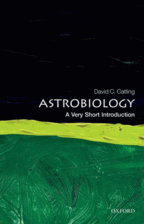
The topics range widely and his knowledge is deep and up-to-date. Of course, we were disappointed that he showed little interest in panspermia, and instead concentrate[s] on a terrestrial origin of life (p 31). And although his thoughts on evolution are confined to strict darwinism, he is at least aware of the evidence for gene transfer and for genes older than their corresponding phenotypes (p 77-79).
"Gaia" is not listed in the 7-page index, but Catling knows plenty about the evolution of planetary atmospheres, plate tectonics, and other environmental processes that interact and coevolve with life. In fact, he is co-authoring a forthcoming book, Atmospheric Evolution on Inhabited and Lifeless Worlds. We will be especially interested to know his considered thoughts about Titan, with its abundant methane, on which he comments briefly, already, here. Of course life makes methane, and methane has profound Gaian effects.
Today's book begins by asking "What is astrobiology?" Catling answers with some history and some alternative definitions, including his favorite, a branch of science concerned with the study of the origin and evolution of life on Earth and the possible variety of life elsewhere. To anyone interested in these issues, we recommend the book.
 David C. Catling, Astrobiology: A Very Short Introduction, ISBN:978-0-19-958645-5, Oxford University Press, Jan 2014. David C. Catling, Astrobiology: A Very Short Introduction, ISBN:978-0-19-958645-5, Oxford University Press, Jan 2014.
 Book explains astrobiology for a general audience by Vince Stricherz, University of Washington, 6 Jan 2014. Book explains astrobiology for a general audience by Vince Stricherz, University of Washington, 6 Jan 2014.
 Gaia is a related CA webpage. Gaia is a related CA webpage.
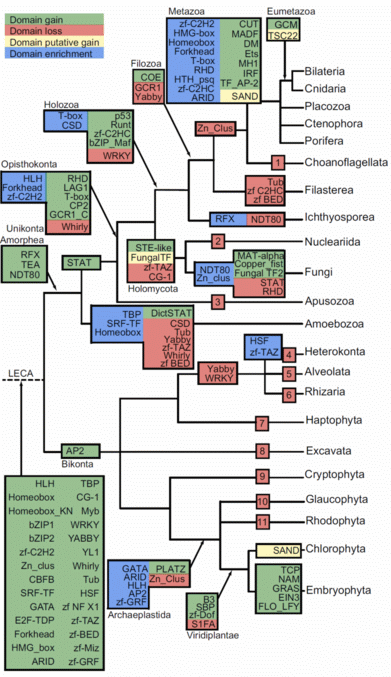 This means that a large percentage of the metazoan and embryophyte regulatory toolkits were already in place before their origin and divergence. Evolutionary biologists in Spain and Croatia say so after an extensive analysis of regulatory proteins called transcription factors (TFs) in eukaryotes. TFs induce the precisely timed expression of specific genetic programs that are essential in embryonic development, for example.
This means that a large percentage of the metazoan and embryophyte regulatory toolkits were already in place before their origin and divergence. Evolutionary biologists in Spain and Croatia say so after an extensive analysis of regulatory proteins called transcription factors (TFs) in eukaryotes. TFs induce the precisely timed expression of specific genetic programs that are essential in embryonic development, for example.
The analysis considers 71 kinds of TFs and plots their distribution among eukaryotes. The results are entirely about the gain or loss of TFs, or their enrichment in number. By using comparative genomics, we show that plants and animals required richer transcriptional machineries compared with other eukaryotic multicellular lineages.
Many TFs are found in simpler species with no apparent use for them, so they appear to be much older than necessary. And for all TFs, too old or not, the term "origin" actually refers to their first appearance, not to any incremental darwinian evolution.
In cosmic ancestry, evolutionary advances follow the installation and deployment of existing genetic programs. In strict darwinian evolution however, genetic programs cannot already exist before deployment. Rather, the deployment and the "origin" of any genetic program must happen concurrently, while natural selection uses trial-and-error to compose the program. We carefully follow the scientific literature to see which scenario is actually observed. Today again, we discern the former scenario, and evidence for darwinian program-composition is conspicuously missing.
Meanwhile, members of the same team observed T-box genes that apparently existed before their deployment. The T-box transcription factors are key players in animal development and they were considered strictly animal-specific. We show that T-box genes have instead an important premetazoan evolutionary history, being present in several nonmetazoan unicellular taxa. More jarring news for strict darwinism. We welcome informed comments.
 Alex de Mendoza, Arnau Sebé-Pedrós et al., "Transcription factor evolution in eukaryotes and the assembly of the regulatory toolkit in multicellular lineages" [abstract], doi:10.1073/pnas.1311818110, Proc. Natl. Acad. Sci. USA, online 25 Nov 2013. Alex de Mendoza, Arnau Sebé-Pedrós et al., "Transcription factor evolution in eukaryotes and the assembly of the regulatory toolkit in multicellular lineages" [abstract], doi:10.1073/pnas.1311818110, Proc. Natl. Acad. Sci. USA, online 25 Nov 2013.
 Arnau Sebé-Pedrós, Ana Ariza-Cosano et al., "Early evolution of the T-box transcription factor family" [Open Access abstract], doi:10.1073/pnas.1309748110, Proc. Natl. Acad. Sci. USA, online 16 Sep 2013. Arnau Sebé-Pedrós, Ana Ariza-Cosano et al., "Early evolution of the T-box transcription factor family" [Open Access abstract], doi:10.1073/pnas.1309748110, Proc. Natl. Acad. Sci. USA, online 16 Sep 2013.
 Metazoan Genes Older Than Metazoa? is a related CA webpage. Metazoan Genes Older Than Metazoa? is a related CA webpage.
 Genes Older Than Earth? is a possibly-related CA webpage. Genes Older Than Earth? is a possibly-related CA webpage.
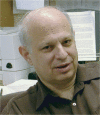 Darwinian evolution is clearly a good mechanism for improving things - but it is not necessarily a good mechanism for generating novelty — Marc Kirschner, founding Chair, Harvard Medical School Department of Systems Biology
Darwinian evolution is clearly a good mechanism for improving things - but it is not necessarily a good mechanism for generating novelty — Marc Kirschner, founding Chair, Harvard Medical School Department of Systems Biology
 Interview: Beyond Darwin: evolvability and the generation of novelty doi:10.1186/1741-7007-11-110, v 11 n 110, BMC Biology, 7 Nov 2013. Interview: Beyond Darwin: evolvability and the generation of novelty doi:10.1186/1741-7007-11-110, v 11 n 110, BMC Biology, 7 Nov 2013.
 31 Oct 2005: The Plausibility of Life, by Marc W. Kirschner and John C. Gerhart (review). 31 Oct 2005: The Plausibility of Life, by Marc W. Kirschner and John C. Gerhart (review).
 Neo-Darwinism... and Neo-Darwinism... and  The Evolution Prize are related CA webpages. The Evolution Prize are related CA webpages.
We Are Not Alone is the title of a lecture by Courtney Dressing tonight at the Harvard-Smithsonian Center for Astrophysics. She will explain evidence that Earth-like planets are abundant and that some should be found "right next door!" The lecture can be viewed as a live webcast, or later, on YouTube. The previous lecture in this series, "After Kepler...," is available now. It tells us that ways to detect life on nearby Earth-like planets are about to become feasible. And a recent Op-Ed piece in The New York Times suggests that extraterrestrial life might be detectable here on Earth.

 The Quest for Earth-Like Planets with Courtney Dressing (44-min. YouTube video), online 25 Nov 2013. The Quest for Earth-Like Planets with Courtney Dressing (44-min. YouTube video), online 25 Nov 2013.
 After Kepler with Dimitar Sasselov, Søren Meibom, and David Latham (60-min. YouTube video), taken 17 Oct 2013. After Kepler with Dimitar Sasselov, Søren Meibom, and David Latham (60-min. YouTube video), taken 17 Oct 2013.
 Events for the Public, Harvard-Smithsonian Center for Astrophysics. Events for the Public, Harvard-Smithsonian Center for Astrophysics.
 Paul Davies, "Are We Alone in the Universe?" [html], The New York Times, 18 Nov 2013. Paul Davies, "Are We Alone in the Universe?" [html], The New York Times, 18 Nov 2013.
 5 November 2013 — a What'sNEW article about evidence for abundant Earth-like planets. 5 November 2013 — a What'sNEW article about evidence for abundant Earth-like planets.
 Thanks, Christine Pulliam, Charlie Newman and Harmon Dunathan. Thanks, Christine Pulliam, Charlie Newman and Harmon Dunathan.
...Some genes and proteins that most people think are specific to being multicellular in animals are already present in their unicellular relatives. US and Canadian biologists make this observation following the recent identification of a unicellular anaerobic eukaryote designated Pygsuia biforma. Genes older than the features they encode are surprising for standard darwinism, but required in cosmic ancestry. We also note that the "origin" of a given gene, here and elsewhere, simply refers to its first appearance in the phyolgeny, not to any gradual darwinian process of creation. In this study some first appearances, and also some disappearances, are noted by circles and dashes, respectively, in the figure below. These would correspond to the insertions and deletions of genetic programs that produce macroevolution, in our view.
 Matthew W. Brown et al., "Phylogenomics demonstrates that breviate flagellates are related to opisthokonts and apusomonads" [abstract], doi:10.1098/rspb.2013.1755, n 1769 v 280, Proc. R. Soc. B, 22 Oct 2013. Matthew W. Brown et al., "Phylogenomics demonstrates that breviate flagellates are related to opisthokonts and apusomonads" [abstract], doi:10.1098/rspb.2013.1755, n 1769 v 280, Proc. R. Soc. B, 22 Oct 2013.
 Newly discovered protist suggests evolutionary answers, questions, Mississippi State University (+Newswise), 13 Nov 2013. Newly discovered protist suggests evolutionary answers, questions, Mississippi State University (+Newswise), 13 Nov 2013.
 Researchers Discover New Organism, University of Arkansas (+Newswise +PhysOrg.com), 17-18 Sep 2013. Researchers Discover New Organism, University of Arkansas (+Newswise +PhysOrg.com), 17-18 Sep 2013.
 Metazoan Genes Older Than Metazoa? has many examples of genes older than they "should" be. Metazoan Genes Older Than Metazoa? has many examples of genes older than they "should" be.
 Macroevolutionary Progress Redefined... is a related local webpage. Macroevolutionary Progress Redefined... is a related local webpage.
We suggest that organic material can survive capture and [interplanetary] transport in products of extreme impact processing....
 Kieren Torres Howard et al., "Biomass preservation in impact melt ejecta" [abstract], doi:10.1038/ngeo1996, Nature Geoscience, 10 Nov 2013. Kieren Torres Howard et al., "Biomass preservation in impact melt ejecta" [abstract], doi:10.1038/ngeo1996, Nature Geoscience, 10 Nov 2013.
 Meteor impact trapped ancient swamp plants in glass by Lisa Grossman, New Scientist, 11 Nov 2013. Meteor impact trapped ancient swamp plants in glass by Lisa Grossman, New Scientist, 11 Nov 2013.
 Thanks, Martin Langford; and Gabriel Manzotti, who writes, "ALIEN hitch-hikers could be riding across the solar system in chariots of glass." Thanks, Martin Langford; and Gabriel Manzotti, who writes, "ALIEN hitch-hikers could be riding across the solar system in chariots of glass."
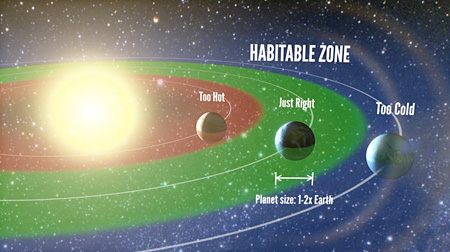 ...It suggests that our Milky Way galaxy contains something like 40 billion Earth-sized planets with lukewarm temperatures, say three astronomers who analyzed data from the Kepler orbiting telescope. They estimate that approximately 22% of sun-like stars have Earth-size planets with orbits that would allow liquid water to persist.
...It suggests that our Milky Way galaxy contains something like 40 billion Earth-sized planets with lukewarm temperatures, say three astronomers who analyzed data from the Kepler orbiting telescope. They estimate that approximately 22% of sun-like stars have Earth-size planets with orbits that would allow liquid water to persist.
 Erik A. Petigura, Andrew W. Howard and Geoffrey W. Marcy, "Prevalence of Earth-size planets orbiting Sun-like stars", doi:10.1073/pnas.1319909110, PNAS, online 4 Nov 2013. Erik A. Petigura, Andrew W. Howard and Geoffrey W. Marcy, "Prevalence of Earth-size planets orbiting Sun-like stars", doi:10.1073/pnas.1319909110, PNAS, online 4 Nov 2013.
 ...How common are habitable planets? by Robert Sanders, UC Berkeley, 4 Nov 2013. ...How common are habitable planets? by Robert Sanders, UC Berkeley, 4 Nov 2013.
 ...Just How Many Earth-Like Planets Are Out There? by Nell Greenfieldboyce, NPR (links to 3.5 min. audio), 5 Nov 2013. ...Just How Many Earth-Like Planets Are Out There? by Nell Greenfieldboyce, NPR (links to 3.5 min. audio), 5 Nov 2013.
 Life on Europa, Other Moons, Other Planets? has related links. Life on Europa, Other Moons, Other Planets? has related links.
Evolution is mediated not only by random mutations over a number of generations (vertical evolution), but also through the mixture of genomic material between individuals of different lineages (horizontal evolution). ...In nature, horizontal evolution can occur through species hybridization in eukaryotes, lateral gene transfer in bacteria, recombination and reassortment in viruses, viral integration in eukaryotes, and fusion of genomes of symbiotic species (e.g., mitochondria).
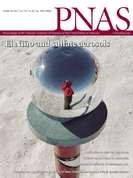
Bioinformaticians from Columbia University and Stanford have employed algebraic topology to model the evolution of certain viruses. The resulting, multi-dimensional figures are not at all like darwinian trees. We note that horizontal evolution is a basic prediction of cosmic ancestry.
 Joseph Minhow Chan, Gunnar Carlsson and Raul Rabadan, "Topology of viral evolution" [abstract], doi:10.1073/pnas.1313480110, Proc. Natl. Acad. Sci. USA, online 29 Oct 2013. Joseph Minhow Chan, Gunnar Carlsson and Raul Rabadan, "Topology of viral evolution" [abstract], doi:10.1073/pnas.1313480110, Proc. Natl. Acad. Sci. USA, online 29 Oct 2013.
 The Tree of Life is a related local webpage. The Tree of Life is a related local webpage.
 Viruses and Other Gene Transfer Mechanisms is a related local webpage. Viruses and Other Gene Transfer Mechanisms is a related local webpage.
What'sNEW about HGT  | |
Russian scientists confirmed that life could be seeded on Earth from space. "Meteors can bring spores of microorganisms from outer space and they can survive passing through the atmosphere," said Vladimir Sychev, acting Director of the Institute for Medical and Biological Research. He made this claim on Tuesday at the international conference of the Russian Academy of Sciences marking the 50th anniversary of the Institute. These words come from a newsrelease following the launch, 19 April 2013, and retrieval, 19 May, of the Russian Bion-M space probe. A module on its outer surface carried various microbes. Despite the heat of re-entry, spore-forming bacteria survived.
 http://www.vz.ru/news/2013/10/29/657174.html, original Russian news release by Maxim Semenov, and
Google Translate's English version, 29 Oct 2013. http://www.vz.ru/news/2013/10/29/657174.html, original Russian news release by Maxim Semenov, and
Google Translate's English version, 29 Oct 2013.
 Did life originate in space? by Kate Zickel, The Voice of Russia, 31 Oct 2013. Did life originate in space? by Kate Zickel, The Voice of Russia, 31 Oct 2013.
 Thanks, Vitaly Mats, for a better English translation of the news release. Mats' Russian translation of Fred Hoyle's Mathematics of Evolution was published 2012. Thanks, Vitaly Mats, for a better English translation of the news release. Mats' Russian translation of Fred Hoyle's Mathematics of Evolution was published 2012.
Manfred Eigen's new book, From Strange Simplicity to Complex Familiarity, covers the widest range of topics that relate, usually, somehow, to the origin of life, his preoccupation for decades. Now 86 years old, he has released a fury of more than 700 pages.
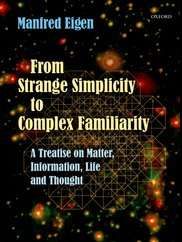 We are pleased that Eigen sees inventive evolution and the origin-of-life as closely related problems, both beset by the software issue. For that he prefers the term "information," and often qualifies it with "meaning," so he deals head-on with the topic of our interest. A substantial portion of the book is about entropy and the second law of thermodynamics, including how evolution and the origin-of-life may get around [the logical analog of] this law — again, perfect for us. He acknowledges the difficulties: "At this stage it suffices to conclude that a closed and formal system cannot generate any information that is not inherent in its algorithms..." (p 285). And immediately he notices that the biosphere is not closed. But he means that it is open to energy and matter, not genetic programs as cosmic ancestry requires. His ultimate affirmative solution is too subtle for us to grasp.
We are pleased that Eigen sees inventive evolution and the origin-of-life as closely related problems, both beset by the software issue. For that he prefers the term "information," and often qualifies it with "meaning," so he deals head-on with the topic of our interest. A substantial portion of the book is about entropy and the second law of thermodynamics, including how evolution and the origin-of-life may get around [the logical analog of] this law — again, perfect for us. He acknowledges the difficulties: "At this stage it suffices to conclude that a closed and formal system cannot generate any information that is not inherent in its algorithms..." (p 285). And immediately he notices that the biosphere is not closed. But he means that it is open to energy and matter, not genetic programs as cosmic ancestry requires. His ultimate affirmative solution is too subtle for us to grasp.
At the 5th Annual Conference on Bioastronomy in Capri, Italy, in 1996, I met Manfred Eigen. Following his paper there on the same themes, I asked a question: Can he name any convincing example in which substantial new encoded programming has been self-generated within a closed system? He reacted with hostility: "What does that have to do with what we are discussing here?" I was completely surprised and abashed by his reaction. I did not then know that only a creationist would dare to ask such a question, and creationists are always treated with contempt. I meekly rephrased and he replied, but his reply provided no satisfaction — nor any convincing example. None in the new book either. I wonder if he would be interested in the challenge of the "Evolution Prize" that we promoted in 2006.
Twenty years ago, Eigen believed the origin-of-life required "proteins first." Now he has switched allegiance to the RNA World. Apparently, he thinks the hardware problem is better solved that way. For cosmology, Eigen accepts the big bang, but he acknowledges variants of the theory that would allow life from the eternal past. We wish he would let himself entertain that possibility.
The book is full of anecdotes and references to other 20th century scientists, most of whom he knows personally. Our disagreements aside, it's a very readable, informed, probing, exhaustive discussion of issues related to the origin of life. And he plans a sequel of five more chapters. Wow.
 Manfred Eigen, From Strange Simplicity to Complex Familiarity: A Treatise on Matter, Information, Life and Thought, ISBN-13: 9780198570219, Oxford Unversity Press [publsher's promo], 18 Jul 2013. Manfred Eigen, From Strange Simplicity to Complex Familiarity: A Treatise on Matter, Information, Life and Thought, ISBN-13: 9780198570219, Oxford Unversity Press [publsher's promo], 18 Jul 2013.
 The RNA World... references Eigen's earlier "proteins first" position. The RNA World... references Eigen's earlier "proteins first" position.
 The Second Law of Thermodynamics, The Second Law of Thermodynamics,  Can Computers Mimic Darwinian Evolution? and the "Next" pages, including Can Computers Mimic Darwinian Evolution? and the "Next" pages, including
 The Evolution Prize... are related local webpages. The Evolution Prize... are related local webpages.
 Manfred Eigen (1927-2019) by Georgina Ferry, Nature, 28 Feb 2019. Manfred Eigen (1927-2019) by Georgina Ferry, Nature, 28 Feb 2019.
...If these DNA repair mechanisms operate in Earth's cryosphere, extraterrestrial microbes might be using this survival mechanism to persist on other icy worlds in the solar system — Brent Christner
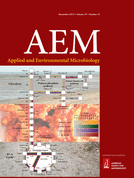
...Christner managed to revive several different types of bacteria from near the bottom of the Guliya ice cap on the Qinghan-Tibetan plateau in Western China – ice that is 750,000 years old.
 Markus Dieser, John R. Battista and Brent C. Christner, "Double-strand DNA break repair at -15°C" [abstract], doi:10.1128/AEM.02845-13, Applied and Environmental Microbiology, online 27 Sep 2013. Markus Dieser, John R. Battista and Brent C. Christner, "Double-strand DNA break repair at -15°C" [abstract], doi:10.1128/AEM.02845-13, Applied and Environmental Microbiology, online 27 Sep 2013.
 LSU Researchers Discover How Microbes Survive in Freezing Conditions, by Paige Brown, Louisiana State University, 10 Oct 2013 (+EurekAlert.org +Astrobiology Magazine +The Daily Galaxy). LSU Researchers Discover How Microbes Survive in Freezing Conditions, by Paige Brown, Louisiana State University, 10 Oct 2013 (+EurekAlert.org +Astrobiology Magazine +The Daily Galaxy).
 Bacteria..., Bacteria...,  Life on Mars! & Life on Mars! &  Life on Europa...? are related CA webpages. Life on Europa...? are related CA webpages.
 Thanks, Anders Brahme, for an informed endorsement of Arrhenius's panspermia. Thanks, Anders Brahme, for an informed endorsement of Arrhenius's panspermia.
 Prof. W.M. Napier defends Chandra Wickramasinghe against blogger Phil Plait in an open letter [docx | pdf], 25 Sep 2013. Prof. W.M. Napier defends Chandra Wickramasinghe against blogger Phil Plait in an open letter [docx | pdf], 25 Sep 2013.
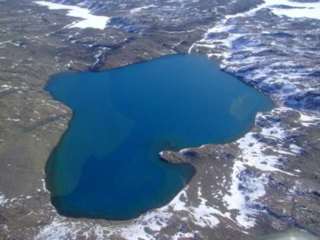 ...A remarkable level of intergenera gene exchange, including the sharing of long contiguous regions (up to 35 kb) of high identity (~100%) takes place among salt- and cold-tolerant archaea in Deep Lake in Antarctica. Gene sharing among prokaryotes is already known to be rampant, but this example is striking. The shared sequences are longer and more faithfully conserved than usual, while the reproductive rate in this cold water is about 100 times slower than that for archaea in warmer environments.
...A remarkable level of intergenera gene exchange, including the sharing of long contiguous regions (up to 35 kb) of high identity (~100%) takes place among salt- and cold-tolerant archaea in Deep Lake in Antarctica. Gene sharing among prokaryotes is already known to be rampant, but this example is striking. The shared sequences are longer and more faithfully conserved than usual, while the reproductive rate in this cold water is about 100 times slower than that for archaea in warmer environments.
 Matthew Z. DeMaere et al., "High level of intergenera gene exchange shapes the evolution of haloarchaea in an isolated Antarctic lake" [abstract], doi:10.1073/pnas.1307090110, Proc. Natl. Acad. Sci. USA, online 30 Sep 2013. Matthew Z. DeMaere et al., "High level of intergenera gene exchange shapes the evolution of haloarchaea in an isolated Antarctic lake" [abstract], doi:10.1073/pnas.1307090110, Proc. Natl. Acad. Sci. USA, online 30 Sep 2013.
 In Antarctic lake, extreme conditions lead to extreme genetics by Kate Prengaman, ArsTechnica, 1 Oct 2013. In Antarctic lake, extreme conditions lead to extreme genetics by Kate Prengaman, ArsTechnica, 1 Oct 2013.
 Viruses and Other Gene Transfer Mechanisms is a related local webpage. Viruses and Other Gene Transfer Mechanisms is a related local webpage.
What'sNEW about HGT  | |
 Thanks, Kevin Hatfield. Thanks, Kevin Hatfield.
|




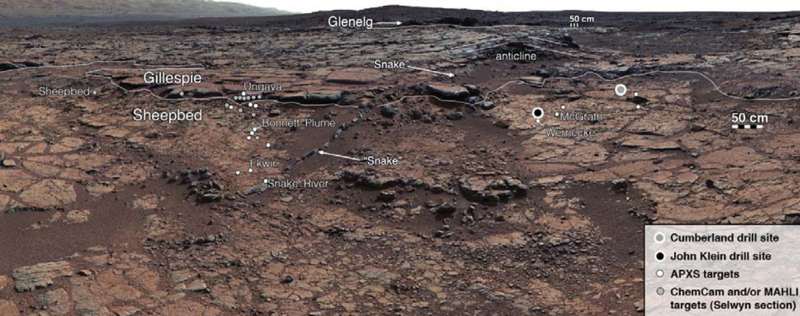



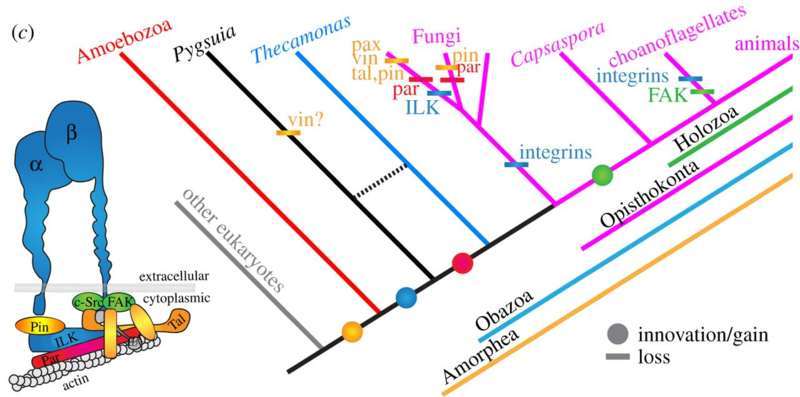
 ...It suggests that our Milky Way galaxy contains something like 40 billion Earth-sized planets with lukewarm temperatures, say three astronomers who analyzed data from the Kepler orbiting telescope. They estimate that approximately 22% of sun-like stars have Earth-size planets with orbits that would allow liquid water to persist.
...It suggests that our Milky Way galaxy contains something like 40 billion Earth-sized planets with lukewarm temperatures, say three astronomers who analyzed data from the Kepler orbiting telescope. They estimate that approximately 22% of sun-like stars have Earth-size planets with orbits that would allow liquid water to persist.


 ...A remarkable level of intergenera gene exchange, including the sharing of long contiguous regions (up to 35 kb) of high identity (~100%) takes place among salt- and cold-tolerant archaea in Deep Lake in Antarctica. Gene sharing among prokaryotes is already known to be rampant, but this example is striking. The shared sequences are longer and more faithfully conserved than usual, while the reproductive rate in this cold water is about 100 times slower than that for archaea in warmer environments.
...A remarkable level of intergenera gene exchange, including the sharing of long contiguous regions (up to 35 kb) of high identity (~100%) takes place among salt- and cold-tolerant archaea in Deep Lake in Antarctica. Gene sharing among prokaryotes is already known to be rampant, but this example is striking. The shared sequences are longer and more faithfully conserved than usual, while the reproductive rate in this cold water is about 100 times slower than that for archaea in warmer environments.
 Darwinian evolution is clearly a good mechanism for improving things - but it is not necessarily a good mechanism for generating novelty — Marc Kirschner, founding Chair, Harvard Medical School Department of Systems Biology
Darwinian evolution is clearly a good mechanism for improving things - but it is not necessarily a good mechanism for generating novelty — Marc Kirschner, founding Chair, Harvard Medical School Department of Systems Biology We are pleased that Eigen sees inventive evolution and the origin-of-life as closely related problems, both beset by the software issue. For that he prefers the term "information," and often qualifies it with "meaning," so he deals head-on with the topic of our interest. A substantial portion of the book is about entropy and the second law of thermodynamics, including how evolution and the origin-of-life may get around [the logical analog of] this law — again, perfect for us. He acknowledges the difficulties: "At this stage it suffices to conclude that a closed and formal system cannot generate any information that is not inherent in its algorithms..." (p 285). And immediately he notices that the biosphere is not closed. But he means that it is open to energy and matter, not genetic programs as cosmic ancestry requires. His ultimate affirmative solution is too subtle for us to grasp.
We are pleased that Eigen sees inventive evolution and the origin-of-life as closely related problems, both beset by the software issue. For that he prefers the term "information," and often qualifies it with "meaning," so he deals head-on with the topic of our interest. A substantial portion of the book is about entropy and the second law of thermodynamics, including how evolution and the origin-of-life may get around [the logical analog of] this law — again, perfect for us. He acknowledges the difficulties: "At this stage it suffices to conclude that a closed and formal system cannot generate any information that is not inherent in its algorithms..." (p 285). And immediately he notices that the biosphere is not closed. But he means that it is open to energy and matter, not genetic programs as cosmic ancestry requires. His ultimate affirmative solution is too subtle for us to grasp.